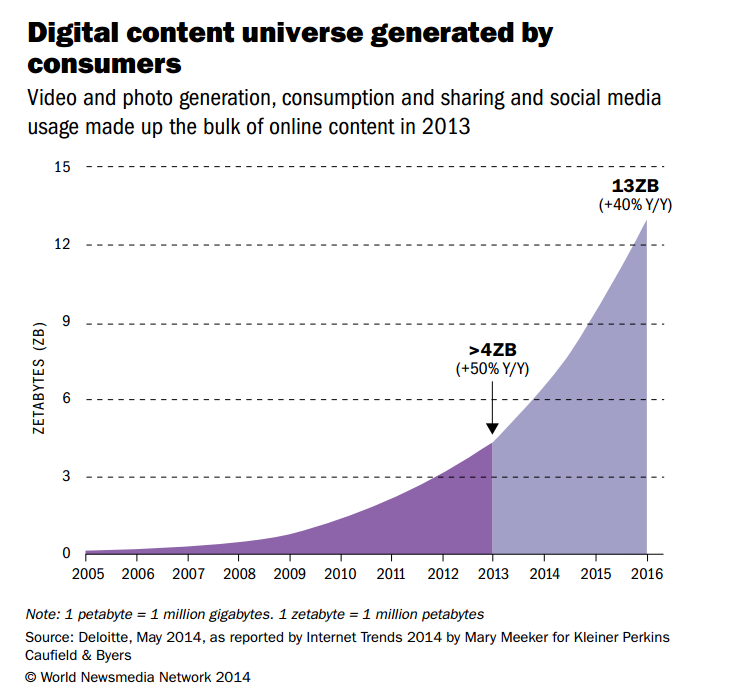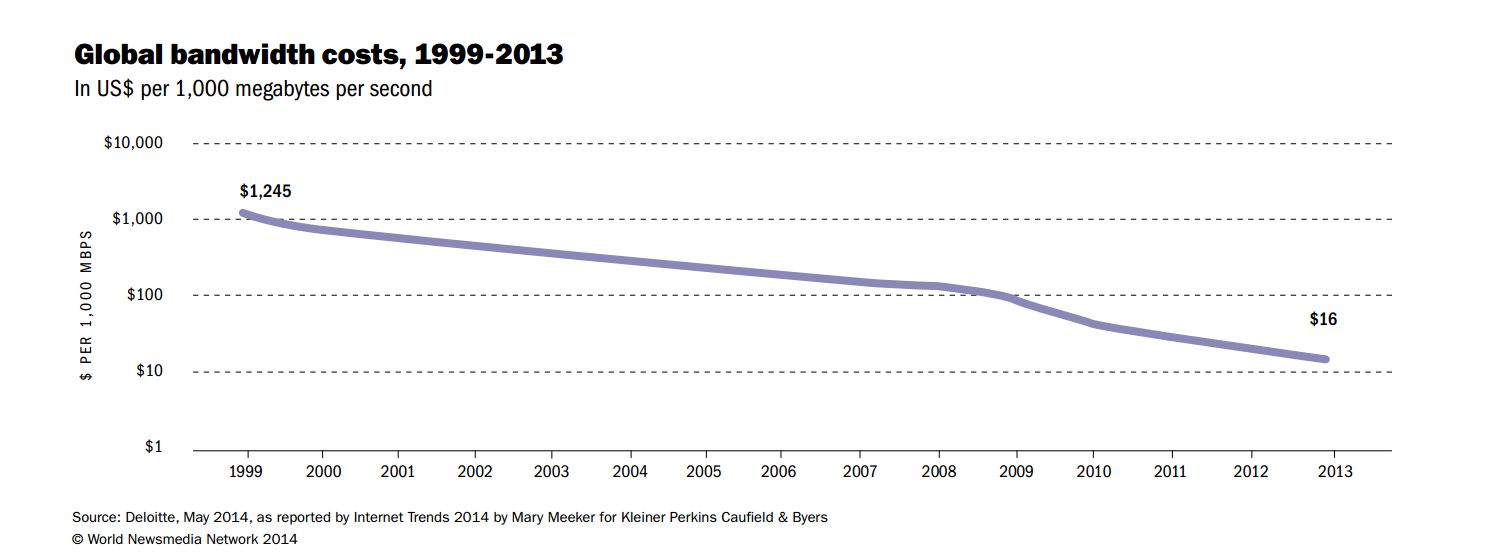Big data analysis involves a variety of strategies and tactics that make sense out of large amounts of data. The Big data analysis trend has impacted industries like never before as new applications and technologies are being developed to automate the process of data analysis and to cater to specific requirements based on types of industries and information.
For media industries/companies, Big data analysis strategies mostly covers end-user/audience analysis to understand the behaviour of the target group of potential customers.
- Tools to examine public and private databases
- Tools to manage search
- Tools to manage visual/graphic content
- Tools for advertising and ad campaigns
- Tools to automate texts, video stories etc.
Big data for media industry can be summarized in four words: Volume, velocity variety and value
Volume: the volume of data you will be working with
Velocity: the speed with which the information needs to analyzed
Variety: the diversity of structured and unstructured information and data formats
Value: the potential value of the information and data in terms of quality writing and business revenue and insights
The report published in Big Data: The Organizational Challenge by Bain and Company in their 2013 survey, businesses that lead the way in using data strategically are:
- 5x as likely to make decisions faster than market peers
- 3x as likely to execute decisions as intended
- 2x as likely to be in the top quarter of financial performances within their industries
- 2x as likely to use data very frequently when making decisions
The benefits for media industry using big data strategies are many, including more targeted news and advertisements with a more engaged audience, relevant and socially engaging content, easily discoverable visual media like videos and photos, and last but not least, the capability to compete with the many refined online media companies who are usually ahead of the traditional media industries, with advance technology and applications at their disposal.

One of the main things any media establishment does is collect heaps of data every minute, both from within or outside the organization. This can include data on advertising and sales, memberships, content, accounting and so much more. Apart from collection, they also produce huge bundles of data which can be videos, photos, graphics and text. This media and entertainment related data itself constitutes about 70% of the internet’s data storing and sharing, which is also growing at an exponential rate according to Mary Meeker’s annual Internet Trends report, published in May 2014.
The digital universe has grown by 50% from the year 2012 to 2013 and is expected to grow about 40% year-after-year (IDC Digital Universe). So how much data is really being stored? The digital universe was measured in petabytes till the year 2005. One million gigabytes is equal to one petabyte and one million petabytes is equal to one zetabyte. But with the age of rapid consumption of information we have moved from petabytes to zetabytes.
To illustrate with better examples let us consider a 7min HD video which requires 1GB of storage but one petabyte can store about 13.3 years of continuous running HD videos. Google and Youtube process more than 24 petabytes of Big data everyday!

The above examples show the copious amount of contribution a well designed Big Data management can give to a media company in the world of internet. Online data is growing exponentially and this data includes videos, pictures graphics to simple tweets, no of facebook posts, the number of shares and likes and popularity etc.
Although producing and collecting data are the first steps in the development of Big Data management, the art of analysis and making the data structured and useful to the end user are the new melody for media companies
In the articles that will follow, we will cover how we can employ big data strategies into media and entertainment industry to save costs and increase revenue.





